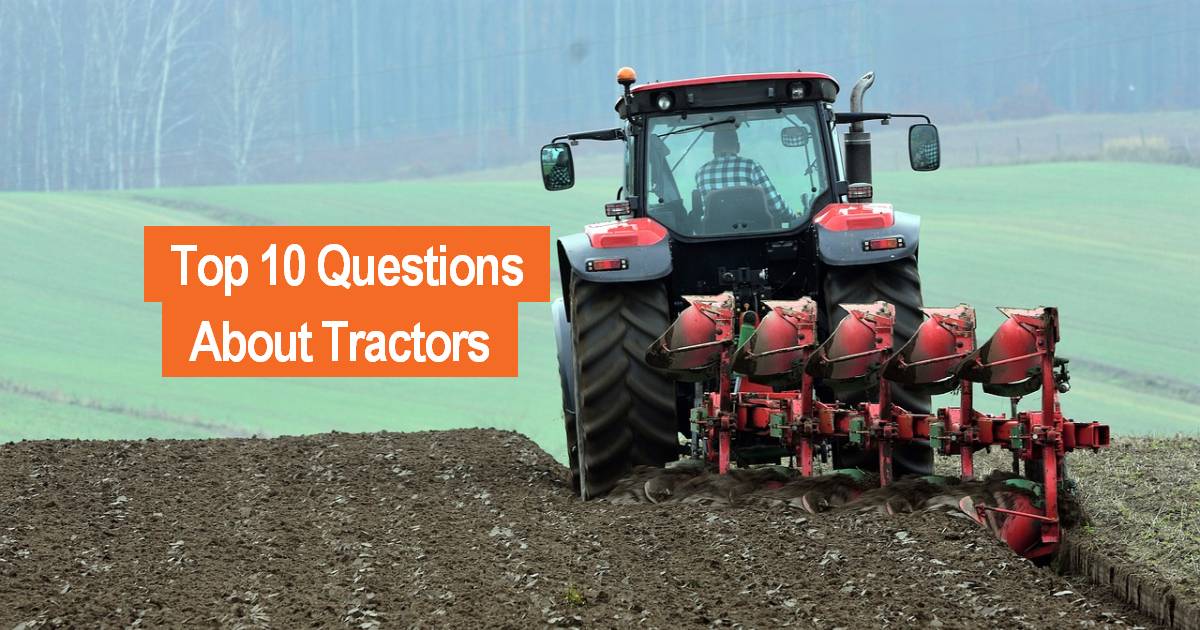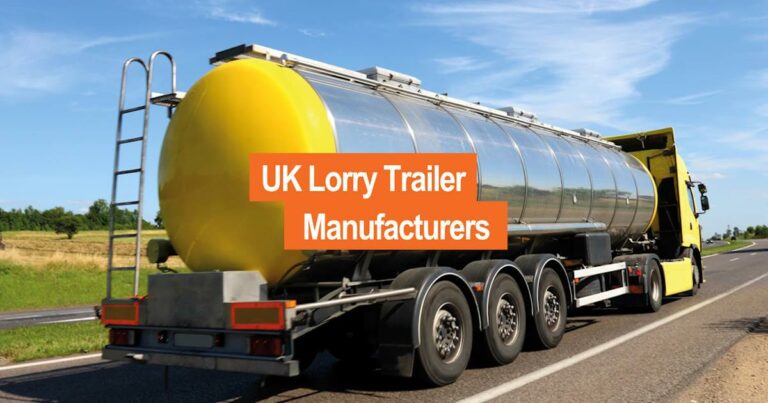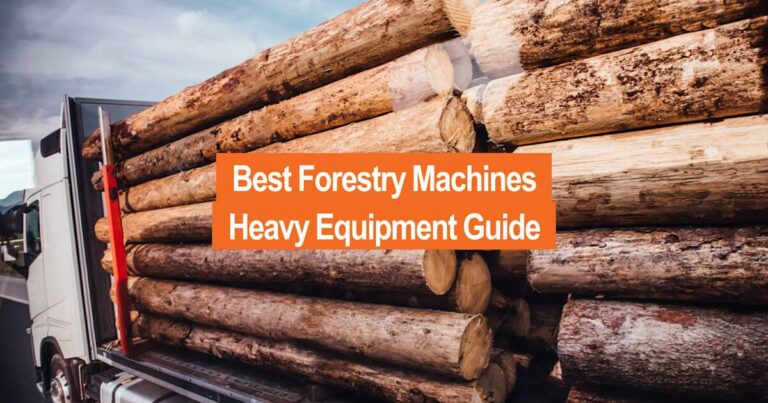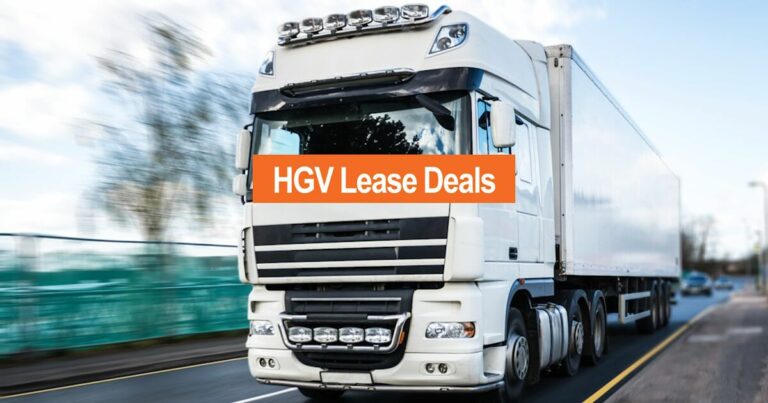Tractors have been a common sight on farms for over a century. They’ve come a long way since the first traction engines and now come in many types, styles, and specifications.
However, despite the variations, most tractors have the same basic features.
So, whether you’re looking to upgrade, are about to buy your first tractor, or are just curious, we’ve answered the top 10 questions people ask about tractors.
What tractor has the most horsepower?
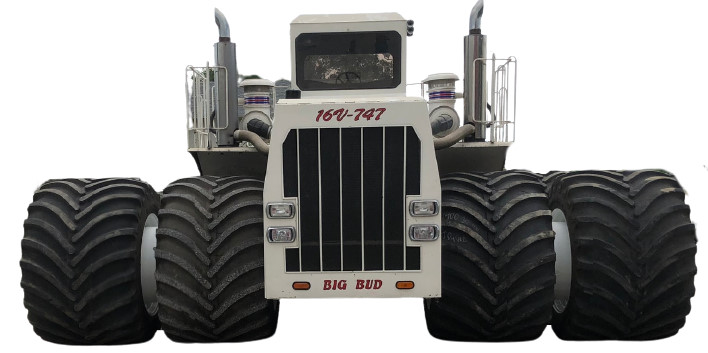
Technically, the world’s largest tractor is Big Bud 747, otherwise known as 16V-747 Big Bud. It has the most horsepower of any tractor in the world, with a massive 1100hp.
However, it is a custom-built, one-of-a-kind tractor, so you can’t go out and buy one.
The most powerful mass-produced tractor is the MeriTractor MT-700, which has a maximum output of 768hp. This is usually used by specialist companies for serious off-road work such a tree logging or digging new roads.
So you’ll unlikely see one on an everyday farm.
How do tractor hydraulics work?
Tractor hydraulics works much like any other hydraulics, which is based on the straightforward principle that “liquids cannot be compressed”. Unlike gases, which can be pressured into smaller spaces, pushing on a liquid will result in an opposite force.
The hydraulic cylinder contains a liquid, usually a type of oil with additives to reduce foaming and to help the oil from breaking down under pressure and heat.
A pump (or series of pumps) circulates the hydraulic oil to create pressure in the system. Normally valves, operated by the driver, control the direction of oil flow to different hydraulic rams (or 3 point linkages etc) to force them to act in one direction – for example to extend a piston ram, and then in reverse to contract the piston.
Effectively, force and potential energy are transformed into movement. This is how front loaders, backhoes and log splitter attachments on tractors operate.
Are tractor tyres tubeless?
Some are, some aren’t.
However, more and more tractor tyres are becoming tubeless. Tubeless tyres have a special interior rubber lining rather than a separate inner tube.
The advantage of the liner is that it is designed to minimise air leaks if the tyre is punctured.
Whereas, although an inner tube is protected by the outer tyre, if you puncture your tyre deeply enough to pierce the tube, the tyre becomes useless (and flat) almost immediately.
With a tubeless tyre, the lining will allow a slower release of air so you can still drive your tractor back for maintenance.
With both types of tyres, repairs are possible if the damage is not too severe.
Why are tractor tyres filled with water?
While you don’t need to fill your tractor tyres with water, some tractor owners choose to fill their tyres with water or a sodium chloride mix (as this prevents freezing).
The reason they fill the tyres with water is to increase traction and performance. When a tractor is too light and working on hard ground, it can slip and lose grip.
Filling tyres with water helps add gross weight to the tractor for better traction. It also lowers the centre of gravity, making the tractor more stable on uneven ground.
Filling the rear tyres with water can also help balance the tractor if it’s being used to lift heavy loads in a front loader or forks.
Why are tractor front tyres small?
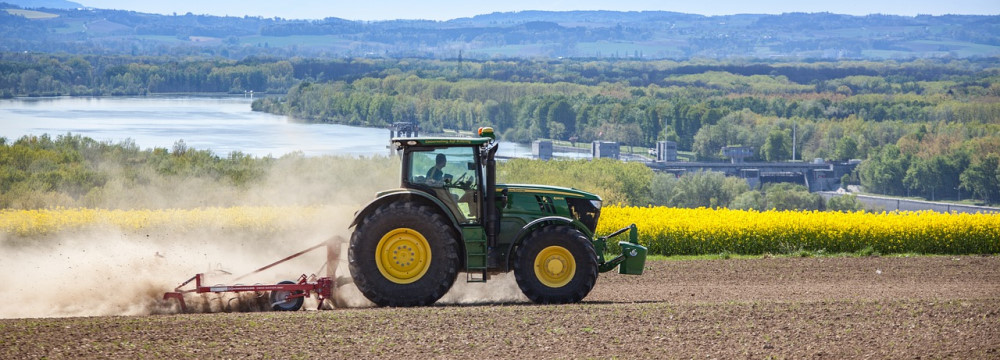
For most tractors, all of the power is focused on the large rear wheels as this helps pull heavy loads or take the weight/force of rear attachments (ploughs etc).
By having smaller wheels at the front, the tractor is easier to control and allows for a greater steering angle for sharper turning.
In addition, if there were large wheels at the front, this could cause visibility issues for the driver.
More and more tractors are 4-wheel drive, so front tyres are increasing in size to give the tractor better overall traction. The downside is a smaller turning radius (and more expensive tyres!).
Are tractor attachments universal?
The most common kind of attachment is a 3-point hitch which can be used on tractors from different manufacturers.
While most attachments have similar hitching requirements, they tend to be of different sizes split into different classes (class 0-3).
For example, a 3-point linkage on a compact tractor is likely to be smaller than that of a “normal” farm tractor. So you’ll need to check the size before you buy.
You should also note your tractor size, weight, and power – as some tractors may not have enough power to safely operate some attachments.
Are tractor batteries 12 volts?
Most tractors use a 12-volt battery. However, some still use the smaller 6-volt battery.
If you need a new battery for your tractor, you’ll need to check which style and size you require. The easiest way to check is to look in your operator’s manual, which should list the battery specifications.
A voltmeter, when used correctly, can help identify if your existing battery is 6-volt or 12-volt.
Make sure you select the correct voltage, as using the wrong battery can damage your tractor (and you).
Why is a tractor called a tractor?
The word tractor comes from the Latin word trahere, which means “to pull”.
Over time, this became the word traction. Traction means to pull an object over the ground and also has connotations of grip.
As such, traction engine was the original name for any pulling machine, specifically agricultural machines. Eventually, this transformed into the modern word tractor as traction machines were commonly used to pull other farming machinery.
Why is a tractor silencer (exhaust) upward?
The first reason a tractor exhaust points upwards is to help with ground clearance.
Tractors are designed to go off-road onto uneven ground, with a low exhaust this would become difficult and might result in damage to the exhaust.
The second reason is that unlike cars, which are designed to be comfortable and have minimal noise, there is no reason to put the exhaust at the back.
Keeping the exhaust close to the engine means less pipework and easier maintenance. Of course this means it is a little bit louder, but a tractor wasn’t really designed to be the most comfortable machine.
Finally, by keeping the exhaust pointing up, fumes will not be breathed in by the driver or farm workers and are less likely to settle on the crops.
How many tractor brands are there?
An official database of tractors named “Tractordata.com” lists 258 tractor brands.
Though not all tractor brands are still actively producing tractors, some are purely historical references to old tractor manufacturers.
Because tractors are continually evolving in design, tractor brands come and go. Certain companies might only make one model of tractor, while others have several models available.
There are tractor brands which are more common than others and are universally known worldwide. The most popular include John Deere, Ford, Fendt, New Holland, Case IH, and Massey Ferguson.
Bonus Questions
What tractor is blue?
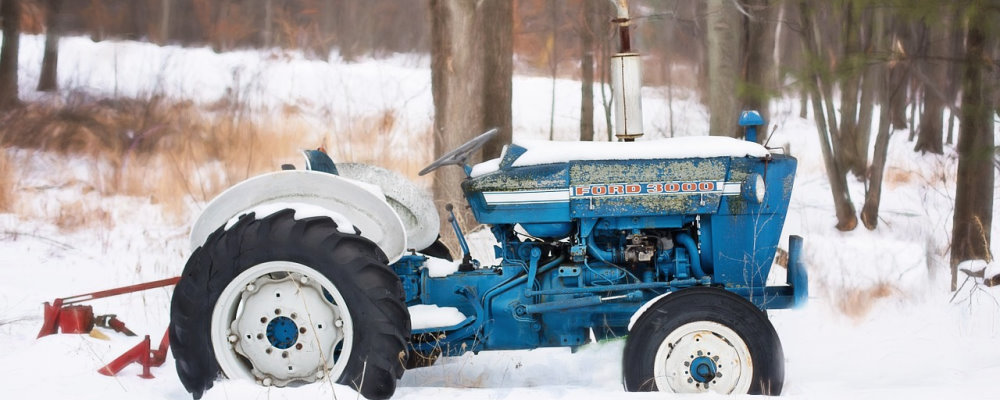
Most tractor brands have distinct colours. As designs have been modified and refined, tractors are becoming more and more similar in style. As such, many brands have used colours to distinguish their design from others at a distance.
The famous blue tractor is almost certainly going to be a Ford.
However, New Holland also regularly uses a blue colour, although it is a darker blue than Ford uses. If it is green and yellow, it’ll likely be a John Deere. Bright red means it will probably be a Case IH tractor.
Why tractors have no suspension?
Much to the annoyance of many, tractors generally do not come with suspension.
There are several reasons for this:
Firstly, tractors are typically operated at such low speeds that suspension is not necessary.
Secondly, tractors need to pull heavy loads in a consistent manner.
Adding suspension would mean the tractor’s centre of gravity (or load point) would vary in height with the angle of its attachment continuously changing.
Can you imagine ploughing a field at a certain depth when the tractor suspension is constantly moving up and down!
Not only is suspension not necessary, but it would also prevent a tractor from being good at its job!
How do you get finance for a tractor?
To arrange finance to purchase or lease a tractor, the best method is to speak with a specialist tractor finance broker.
Evangate FS have helped thousands of farmers, groundcare workers and forestry operators to secure tractor finance quickly at affordable rates – often when other lenders have turned them down or ask for mountains of paperwork to be completed.
For all types of farm finance, speak to Evangate FS today.

